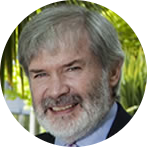-
Member Login
- Home
- About
- Institute Groups
- Membership
- Events
- News & Publications
- Institute Programs
- Resources
- Jobs Board
- Contact Us
- Site Info
Dr Bryan Jenkins FEIANZ
Dr Bryan Jenkins FEIANZ
Abstract | Audited self-management: A more effective approach to improve compliance
A key component of environmental management is achieving compliance with conditions associated with consents and licences. The traditional approach has been for regulators to define conditions and inspect to assess compliance. The alternative concept of audited self-management (ASM) was originally developed in Western Australia with the introduction of monitored and best practice licences. ASM involves the company developing their own policies, procedures and plans to achieve environmental outcomes set with the regulator, requires third party certification of their environmental systems and auditing of environmental performance, and, public reporting of performance.
With land use intensification in Canterbury, there has been a challenge managing diffuse discharges to surface and ground water. This requires a high standard of land use management practices that are difficult to define as compliance conditions. Furthermore, the environmental outcomes being sought relate to water quality in downstream rivers and lakes. This involves management of cumulative effects of multiple properties in upstream catchments.
ASM is being implemented to address this issue. This involves setting nutrient contaminant limits for rivers and lakes, linking limits to catchment nutrient loads, allocating catchment loads among existing users while creating headroom for new users, and, farmers adopting good management practices. Farmer collectives are being established based on irrigation districts, or tributary catchments. Collectives need an approved Environmental Management System (EMS) that defines water quality outcomes for the collective consistent with regional plan requirements. The EMS requires an inventory of nutrient-loss rates, nutrient risk identification and their management through land-use practices. The EMS defines contractual arrangements with members including Farm Environmental Plans (FEP) where farmers specify the practices they will adopt consistent with the EMS, and, how FEPs will be independently audited and compliance achieved. The EMS defines record-keeping requirements, reporting of results to members and the community, and how poor performance will be managed.
Bio | Dr Bryan Jenkins FEIANZ
 Bryan has recently retired from the position of Professor, Strategic Water Management at the Waterways Centre for Freshwater Management, a joint centre of the University of Canterbury and Lincoln University. The Centre provides undergraduate and postgraduate courses in water resources management and coordinates research across the universities in water resource issues.
Bryan has recently retired from the position of Professor, Strategic Water Management at the Waterways Centre for Freshwater Management, a joint centre of the University of Canterbury and Lincoln University. The Centre provides undergraduate and postgraduate courses in water resources management and coordinates research across the universities in water resource issues.
Prior to this appointment he was chief executive of Environment Canterbury for more than seven years. Environment Canterbury is the regional council for Canterbury whose responsibilities include natural resource management. He was responsible for the introduction of collaborative governance concepts to the regional council including the development of the Canterbury Water Management Strategy.
Before coming to Canterbury, he was chief executive of the Department of Environmental Protection in Western Australia for seven years. Prior to that, he had more than 20 years’ experience in environmental management consulting throughout Australia, South East Asia, India and China.
He has a PhD in environmental planning from Stanford University, a masters and first class honours degrees in civil engineering from Adelaide University and a master of administration from Monash University.
He is a Fellow and foundation member of EIANZ and is a member of the EIANZ Board.
We acknowledge and value the rights and interests of Indigenous Peoples in the protection and management of environmental values through their involvement in decisions and processes, and the application of traditional Indigenous knowledge.

